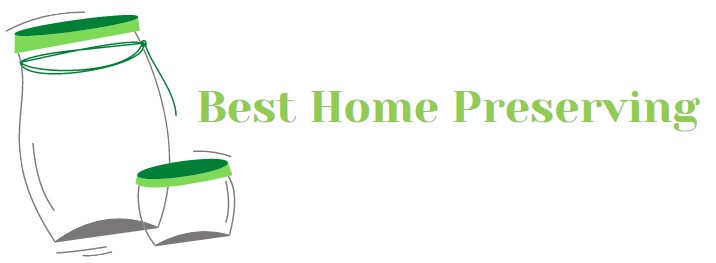With Christmas complete, it’s time to turn our attention toward the Christmas leftovers you have in your home! The big question is, what do you do with them?
Do you freeze them, store them in a refrigerator or prepare to have friends around for the next week or two? All these are viable options but none of them come close to the ease and convenience of vacuum-sealed Christmas leftovers.
Firstly, keeping Christmas leftovers in the refrigerator is an OK option. Just remember, most of these will need to be consumed within 3-5 days after Christmas. However, this option does not preserve flavor as well as vacuum sealing and can lead to food spoilage.
Plus, if you’re like me and always seem to over-cater for Christmas dinner, vacuum sealing allows you to save space in your freezer.
I usually vacuum seal each food in a different bag before freezing. However, this year I decided to try something different and created individual “meals” that I then vacuum sealed. I did some in a bag, and some in special vacuum sealing containers.
Quick Content Navigation
Benefits of Vacuum Sealing Christmas Leftovers
- Save Money
In order to save money, you can use the food that you have on hand. If you constantly find yourself with an abundance of Christmas leftovers, vacuum sealing is a better alternative to regular freezing as it maintains taste and nutrients. Plus, food that is properly vacuum sealed will last up to 12 months in the freezer so you can plan meals around this.
- Avoid Food Waste
We all hate to throw food out and know that food waste has become a major problem around the world. To avoid food waste, vacuum-sealing your Christmas leftovers is a great option. Not only does it maintain flavor and texture, but vacuum sealing reduces a foods volume so will save space in your freezer.
- Quick and Easy Meals
Another great thing about vacuum sealing your Christmas leftovers is you can have quick and easy meals for future use. Simply reheat the food in a microwave or oven and you’re ready to go! No need to cook anything from scratch – just take out a vacuum-sealed dish from the freezer! This is a great option for those days when you don’t have time to cook or just don’t feel like cooking.
- Eco-friendly
Vacuum sealing your Christmas leftovers is also an eco-friendly option. By using a vacuum sealer, you’re not wasting any food, thereby keeping it out of landfill. However, if you use vacuum-seal containers, there is the added benefit that you can recycle these.
So, if you’re looking for a way to use up all of those Christmas leftovers, vacuum sealing is the way to go!
What are Christmas Leftovers that Can Be Vacuum-Sealed?
Here is the list of Christmas leftovers, but not limited to:
- Christmas Ham
- Potato Salad
- Cranberry Sauce
- Brussel Sprouts
- Cooked Spinach
- Bread Rolls
- Salad
- Mashed Potatoes
- Gravy
- Roast Turkey
- Pumpkin Pie
- Christmas Cake
- Pudding
- Cheese Cake
- Ice Cream
- Coffee or Tea
- Coffee (after it has cooled down)
- Hot Tea (after it has cooled down)
So, as you can see, there are many different types of Christmas leftovers that can be vacuum-sealed. Whether you’re looking to freeze them, store them in the refrigerator or use them for a quick and easy meal, vacuum sealing is a great option! So, don’t throw away those leftovers – vacuum seal them and you can enjoy them anytime you want!
To vacuum seal any of the food items listed, first make sure they are cold and free from ice crystals. Place a piece of parchment paper on a flat surface and layout all the food you wish to vacuum seal.
What Equipment do You Need to Vacuum Seal Christmas Leftovers?
Vacuum Sealer
The best option for vacuum sealing food in a vacuum sealer, which will suck the air out of the bag and seal it. You can check our reviews on the best vacuum sealers.
Zip Lock Bags
Ziplock bags are a cheaper alternative to vacuum seals but not as effective. They can be used in a pinch if you don’t have a food vacuum sealer handy, although they may leak during transport. Read our article How To Use Ziploc Bags In A Vacuum Sealer.
Meat Thermometer
To ensure that your leftovers are cooked thoroughly, invest in a meat thermometer that can be used for both meat and poultry. This way, you’ll know that everything is properly prepared before you store it.
Vacuum Sealer bags
If you’re using a vacuum sealer, you’ll need to use special vacuum sealer bags. These are thicker and more durable than standard zip lock bags and they’re also better for the sealer. You can check out our article Best Vacuum Sealer Bags to find the best ones for your sealer.
Methods and Tips on Vaccum Sealing Food from Our Experts
By following the links below, you will get an in-depth guide on how to vacuum seal your Christmas leftovers.
FAQs
How long can these Christmas leftovers be stored?
Most of the food items on this list can be stored in a vacuum-sealed bag for up to 3 months. However, if you want to store them for longer than that, you can freeze them.
Can I vacuum-seal food that has already been frozen?
Yes, you can vacuum-seal food that has already been frozen. However, make sure the food is completely thawed before vacuum-sealing it.
Will vacuum-sealed food lose its flavor and texture?
No, vacuum-sealed food will not lose its flavor or texture. In some cases, such as with cooked carrots, the color may change slightly but that is about it.
Can food be re-frozen after being vacuum sealed?
Yes, you can refreeze vacuum-sealed food. However, make sure the food is completely thawed before refreezing it. Also, try to use the food within a week or two because it will not last as long when refrozen.
How do I reheat Christmas leftovers that have been vacuum-sealed?
The best way to reheat vacuum-sealed food is in the oven or microwave. Make sure the food is completely thawed before reheating it.
Conclusion
Vacuum sealing Christmas leftovers is a great way to preserve them for later use. It can be used with meat and non-meat products, such as ham or turkey and potato salad.
The best option is to get a vacuum sealer but if you don’t have one, ziplock bags will work too! You’ll need cold food that hasn’t been iced over and parchment paper to lay the food on.
Try either creating a full meal so store, or separate foods and seal them individually. For longer storage, use vaccum seal bags or containers and then freeze.
Vacuum sealing Christmas leftovers has many benefits:
- environmentally friendly,
- it gives you an easy meal anytime,
- saves money by simply reheating delicious Christmas leftovers!
If smoked meat is one of your favorite delicacies, check also our post; Top Meat Smokers Forums For Great BBQ Taste At Home





 Hi! I’m Sally-Anne!
Hi! I’m Sally-Anne!